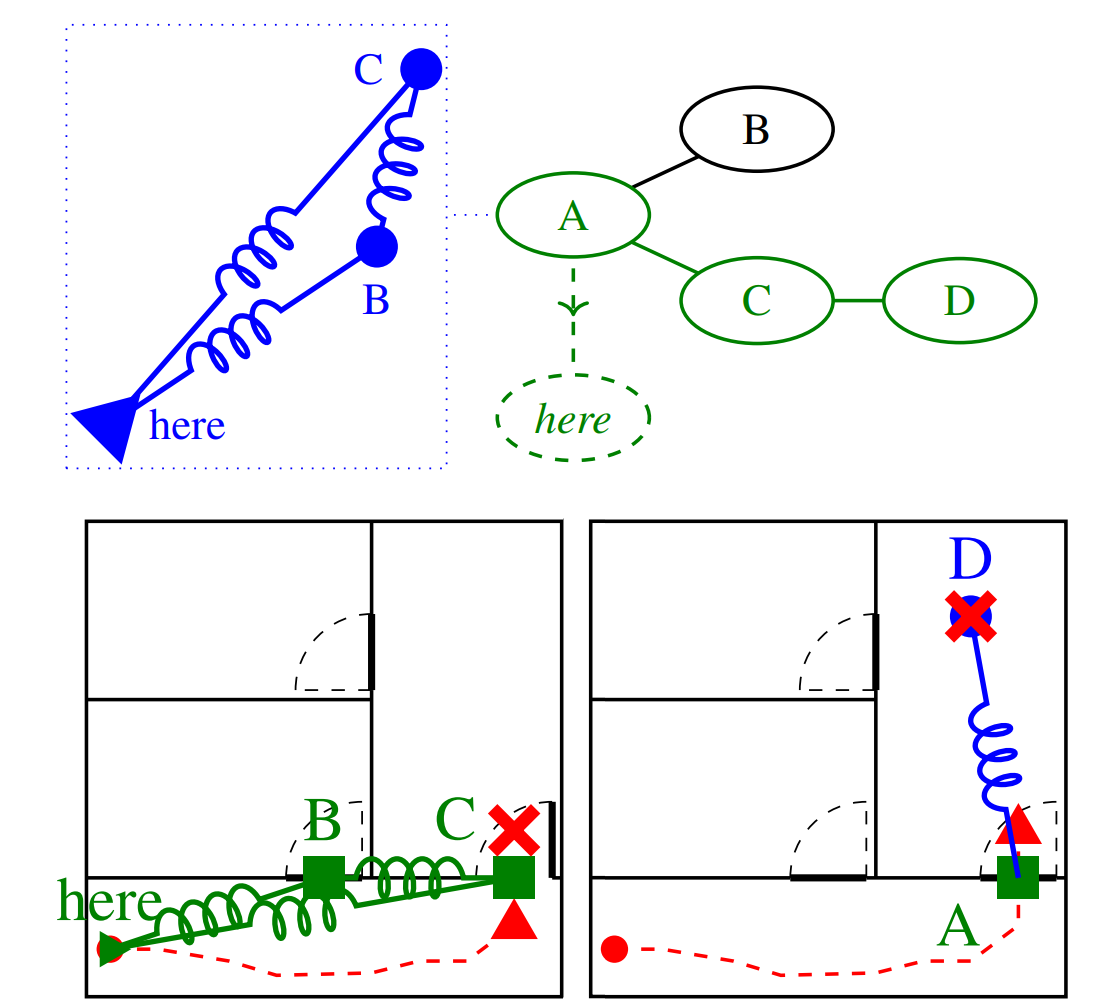Find my office: Navigating real space from semantic descriptions
21 May 2016

This paper shows that by using only symbolic language phrases, a mobile robot can purposefully navigate to specified rooms in previously unexplored environments. The robot intelligently organises a symbolic language description of the unseen environment and “imagines” a representative map, called the abstract map. The abstract map is an internal representation of the topological structure and spatial layout of symbolically defined locations. To perform goal-directed exploration, the abstract map creates a high-level semantic plan to reason about spaces beyond the robot's known world. While completing the plan, the robot uses the metric guidance provided by a spatial layout, and grounded observations of door labels, to efficiently guide its navigation. The system is shown to complete exploration in unexplored spaces by travelling only 13.3% further than the optimal path.
© Ben Talbot. All rights reserved.





